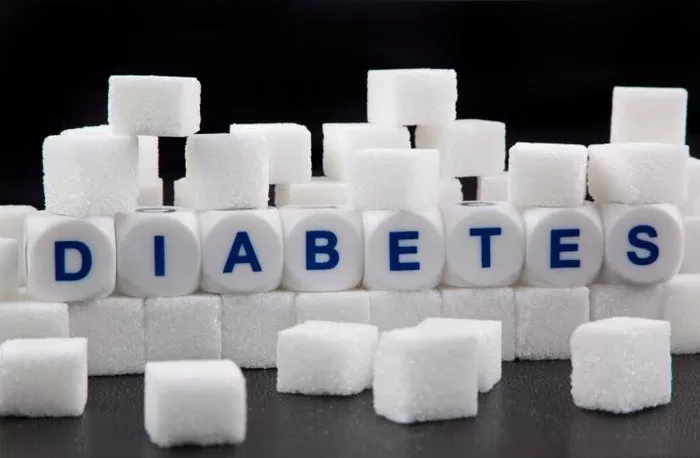Diabetes Type 1, also known as Type 1 Diabetes Mellitus, is a chronic autoimmune condition characterized by the body’s inability to produce insulin. Unlike Type 2 diabetes, which is often associated with insulin resistance, Type 1 diabetes results from the destruction of insulin-producing beta cells in the pancreas. This article delves into the definition of Type 1 diabetes, its pathophysiology, symptoms, diagnosis, and management strategies.
Definition of Type 1 Diabetes
Type 1 diabetes is a form of diabetes characterized by the autoimmune destruction of pancreatic beta cells, leading to a deficiency in insulin production. Insulin is a hormone crucial for regulating blood glucose levels by facilitating the uptake of glucose into cells for energy. Without sufficient insulin, glucose accumulates in the bloodstream, leading to hyperglycemia (high blood sugar).
Key Characteristics
Autoimmune Destruction: The immune system mistakenly attacks and destroys beta cells in the pancreas.
Insulin Dependence: Individuals with Type 1 diabetes require lifelong insulin therapy to manage blood glucose levels.
Onset: It commonly presents in childhood or early adulthood but can occur at any age.
Prevalence: Type 1 diabetes accounts for approximately 5-10% of all diabetes cases.
Pathophysiology of Type 1 Diabetes
The pathophysiology of Type 1 diabetes involves a complex interplay between genetic susceptibility and environmental factors, leading to autoimmune destruction of pancreatic beta cells.
Autoimmune Mechanisms
Immune Response: In Type 1 diabetes, the immune system targets and destroys the insulin-producing beta cells in the pancreas. This destruction is mediated by T lymphocytes (a type of white blood cell) that recognize beta cells as foreign.
Genetic Factors: Certain genetic markers, such as those associated with the major histocompatibility complex (MHC) on chromosome 6, increase susceptibility to autoimmune destruction.
Environmental Triggers: Environmental factors, such as viral infections, may trigger the autoimmune response in genetically predisposed individuals.
Beta Cell Destruction
Insulin Deficiency: As beta cells are destroyed, the pancreas produces little to no insulin, leading to elevated blood glucose levels.
Hyperglycemia: The lack of insulin impairs glucose uptake into cells, causing glucose to accumulate in the blood.
Symptoms of Type 1 Diabetes
The symptoms of Type 1 diabetes often develop rapidly and may be severe. They include:
Classic Symptoms
Polydipsia: Excessive thirst due to dehydration from high blood glucose levels.
Polyuria: Frequent urination as the body attempts to eliminate excess glucose.
Polyphagia: Increased hunger as cells are unable to absorb glucose for energy.
Unexplained Weight Loss: Loss of weight despite increased appetite due to the body’s inability to use glucose effectively.
Additional Symptoms
Fatigue: Persistent tiredness and lack of energy.
Blurred Vision: Resulting from fluid shifts and changes in the eye’s lens.
Ketones in Urine: Presence of ketones (ketonuria) indicating fat breakdown for energy due to insufficient glucose use.
Diagnosis of Type 1 Diabetes
Diagnosis of Type 1 diabetes is based on clinical presentation and laboratory tests. Key diagnostic tests include:
Fasting Plasma Glucose Test
Procedure: Measures blood glucose levels after an overnight fast.
Diagnostic Criteria: A fasting plasma glucose level of 126 mg/dL (7.0 mmol/L) or higher confirms diabetes.
Oral Glucose Tolerance Test (OGTT)
Procedure: Measures blood glucose levels after fasting and consuming a glucose solution.
Diagnostic Criteria: A 2-hour plasma glucose level of 200 mg/dL (11.1 mmol/L) or higher indicates diabetes.
Hemoglobin A1c (HbA1c) Test
Procedure: Measures average blood glucose levels over the past 2-3 months.
Diagnostic Criteria: An HbA1c level of 6.5% or higher confirms diabetes.
Autoantibody Testing
Procedure: Detects autoantibodies associated with autoimmune destruction of beta cells.
Types of Autoantibodies: Commonly tested autoantibodies include GAD65 (glutamic acid decarboxylase), IA-2 (insulinoma-associated protein 2), and ICA (islet cell antibodies).
C-Peptide Test
Procedure: Measures levels of C-peptide, a byproduct of insulin production.
Diagnostic Criteria: Low C-peptide levels suggest reduced insulin production, supporting the diagnosis of Type 1 diabetes.
Management of Type 1 Diabetes
Effective management of Type 1 diabetes involves a combination of insulin therapy, lifestyle modifications, and regular monitoring to achieve optimal blood glucose control and prevent complications.
Insulin Therapy
Types of Insulin:
Rapid-Acting Insulin: Provides quick action to manage blood glucose spikes after meals (e.g., insulin lispro, insulin aspart).
Short-Acting Insulin: Covers meals and controls blood glucose levels throughout the day (e.g., regular insulin).
Intermediate-Acting Insulin: Provides extended coverage between meals (e.g., NPH insulin).
Long-Acting Insulin: Maintains stable blood glucose levels over 24 hours (e.g., insulin glargine, insulin detemir).
Administration Methods:
Syringes: Traditional method for insulin injection.
Insulin Pens: Pre-filled pens offering convenience and ease of use.
Insulin Pumps: Devices that deliver continuous insulin infusion and can be programmed for basal and bolus insulin delivery.
Continuous Glucose Monitors (CGMs): Devices that provide real-time glucose readings and help adjust insulin doses.
Blood Glucose Monitoring
Frequency:
Self-Monitoring: Regular blood glucose checks using a glucometer or CGM.
Target Ranges: Maintain blood glucose levels within recommended ranges as advised by healthcare providers.
Technology:
Glucometers: Portable devices for measuring blood glucose levels from a fingertip blood sample.
Continuous Glucose Monitoring (CGM): Provides real-time glucose levels and trends, helping to adjust insulin therapy and manage blood glucose more effectively.
Dietary Management
Balanced Diet:
Carbohydrate Counting: Track carbohydrate intake to manage blood glucose levels effectively.
Balanced Meals: Include a mix of proteins, healthy fats, and fiber-rich carbohydrates to stabilize blood sugar levels.
Meal Planning:
Regular Meals: Eat regular meals and snacks to prevent blood glucose fluctuations.
Portion Control: Monitor portion sizes to manage carbohydrate intake and insulin requirements.
Physical Activity
Exercise Recommendations:
Regular Activity: Engage in regular physical activity to improve insulin sensitivity and manage blood glucose levels.
Types of Exercise: Include aerobic exercises (e.g., walking, swimming) and resistance training (e.g., weight lifting).
Monitoring:
Adjust Insulin: Monitor blood glucose levels before, during, and after exercise to adjust insulin and prevent hypoglycemia.
Lifestyle Modifications
Stress Management:
Stress Reduction: Practice stress-reducing techniques such as mindfulness, meditation, and relaxation exercises.
Sleep Hygiene:
Quality Sleep: Ensure adequate and restful sleep to support overall health and blood glucose management.
Education and Support
Diabetes Education:
Patient Education: Learn about diabetes management, including insulin administration, blood glucose monitoring, and carbohydrate counting.
Support Networks: Engage with support groups, healthcare providers, and diabetes educators for ongoing guidance and support.
Complications of Type 1 Diabetes
Effective management of Type 1 diabetes is crucial to prevent complications, which can affect various organ systems:
Short-Term Complications
Hypoglycemia: Low blood glucose levels resulting from excessive insulin or inadequate food intake. Symptoms include shakiness, sweating, confusion, and, in severe cases, loss of consciousness.
Diabetic Ketoacidosis (DKA): A serious condition resulting from insufficient insulin, leading to ketone production and metabolic acidosis. Symptoms include nausea, vomiting, abdominal pain, and fruity-smelling breath.
Long-Term Complications
Cardiovascular Disease: Increased risk of heart disease and stroke due to chronic hyperglycemia and associated risk factors.
Neuropathy: Nerve damage, often affecting the feet and hands, leading to pain, numbness, or tingling.
Retinopathy: Damage to the blood vessels in the eyes, potentially leading to vision problems and blindness.
Nephropathy: Kidney damage that can progress to chronic kidney disease or kidney failure.
Living with Type 1 Diabetes
Living with Type 1 diabetes requires ongoing commitment to blood glucose management and lifestyle adjustments. Here are some key considerations:
Regular Medical Care
Routine Check-Ups: Regular visits to healthcare providers for monitoring blood glucose levels, assessing complications, and adjusting treatment plans.
Specialist Care: Consultation with endocrinologists, dietitians, and diabetes educators as needed.
Psychological Support
Mental Health: Address the emotional and psychological aspects of living with a chronic condition. Seek support from mental health professionals if needed.
Community Support: Engage with diabetes support groups and online communities for shared experiences and encouragement.
Advances in Research and Technology
Emerging Treatments: Stay informed about advancements in diabetes research, including new medications, insulin delivery systems, and glucose monitoring technologies.
Clinical Trials: Consider participating in clinical trials to contribute to research and access cutting-edge treatments.
See also: What is the Pathogenesis of Type 1 Diabetes?
Conclusion
Diabetes Type 1 is a chronic autoimmune condition characterized by the destruction of insulin-producing beta cells in the pancreas. Effective management involves a comprehensive approach, including insulin therapy, blood glucose monitoring, dietary management, and lifestyle modifications. By understanding the definition, pathophysiology, symptoms, and management strategies of Type 1 diabetes, individuals can achieve optimal blood glucose control and reduce the risk of complications. Ongoing medical care, support, and advancements in research are crucial for improving the quality of life and long-term outcomes for those living with Type 1 diabetes.
Related topics:
What Causes Non Diabetic Hypoglycemia

























